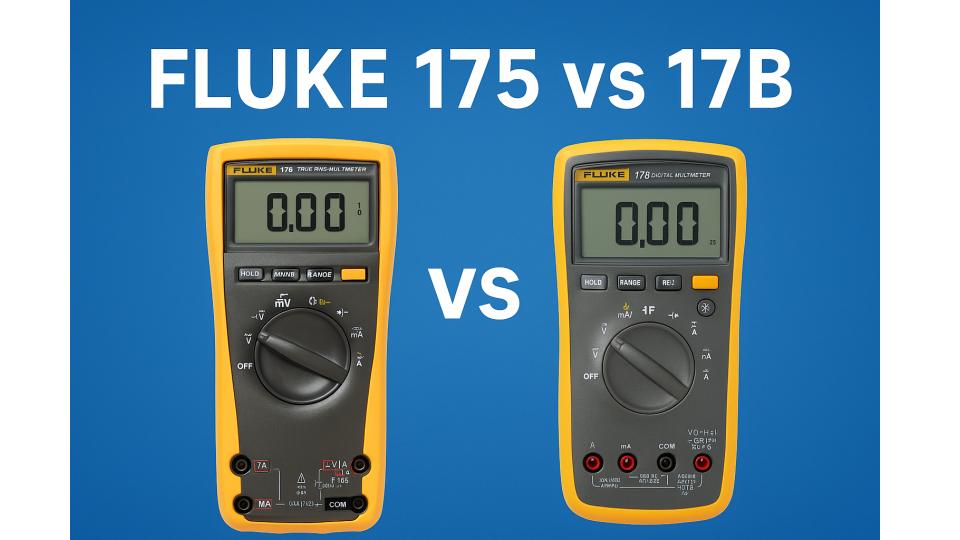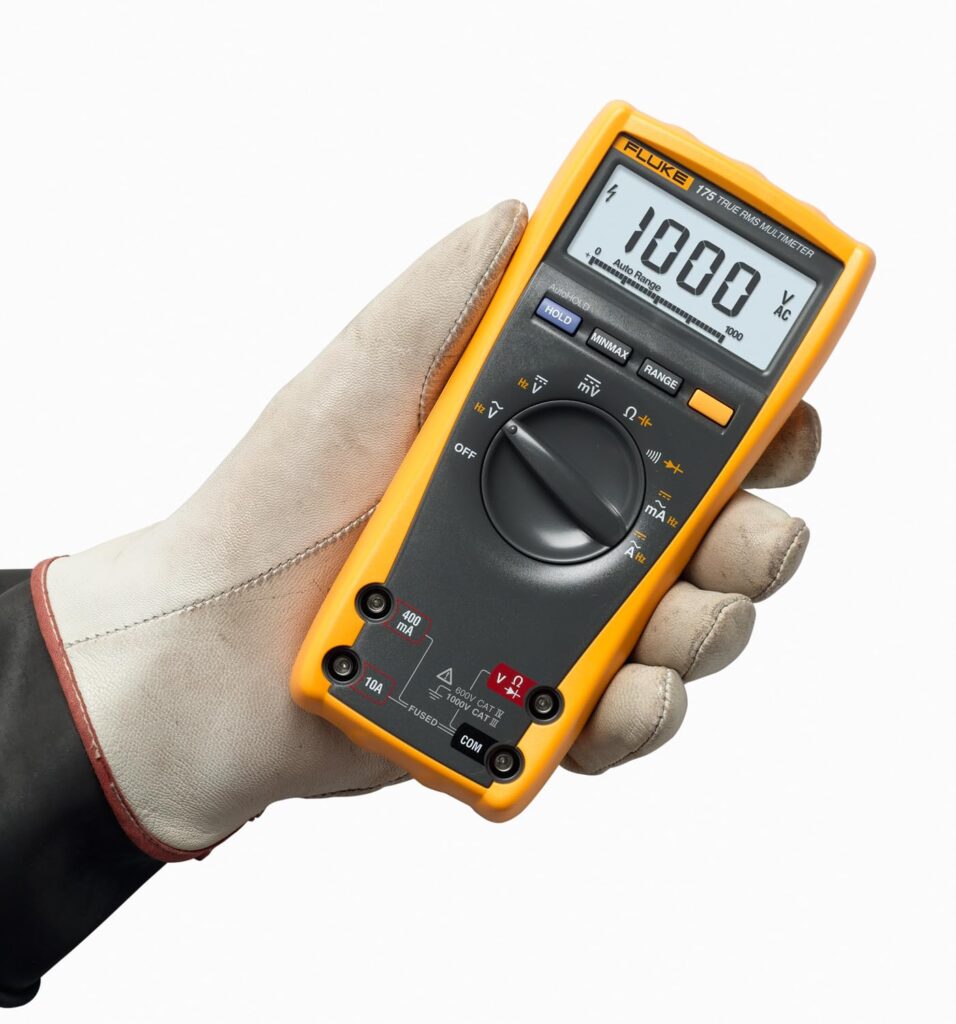Fluke offers a wide range of multimeter models tailored to different markets and needs.
Two popular models are the Fluke 175, from the globally recognized 170 series, and the Fluke 17B+, a model primarily marketed in Asia as an affordable professional multimeter.
🏷️ Fluke Multimeter Deals ⭐⭐⭐⭐
While they share the Fluke reputation for quality, they are aimed at different audiences. Let’s compare the two.
🔍 Overview
Fluke 175
A mid-tier True RMS digital multimeter from the 170 series. It’s designed for professionals who need a reliable, safety-rated tool for industrial, electrical, and electronic work.
Fluke 17B+
A cost-effective multimeter designed mainly for the Asian market, offering many essential features at a more affordable price. While it lacks some of the advanced safety and accuracy ratings of the 170 series, it delivers strong value for technicians, hobbyists, and engineers who don’t need the highest-end specs.
📊 Comparison Table
| Feature | Fluke 175 | Fluke 17B+ |
|---|---|---|
| True RMS | Yes | No (average responding) |
| Maximum Voltage (AC/DC) | 1000 V | 1000 V |
| Resolution / Counts | 6000 counts | 6000 counts |
| DC Voltage Accuracy | ±0.15% | ±0.5% |
| AC Voltage Accuracy | ±1.0% (True RMS) | ±1.0% (average responding) |
| Current Range | Up to 10 A | Up to 10 A |
| Frequency Measurement | Yes | Yes |
| Capacitance Measurement | Yes | Yes |
| Temperature Measurement | No | Yes (with thermocouple) |
| Display Features | Basic LCD, no backlight | Large backlit display |
| Safety Ratings | CAT IV 600 V / CAT III 1000 V | CAT III 600 V / CAT II 1000 V |
| Build & Ruggedness | Industrial-grade, very robust | Solid, but less rugged |
| 💳 Pricing | 💲 Check Price | 💲 Check Price |
✅ Pros & Cons
Fluke 175
Pros
- True RMS ensures accurate readings on complex waveforms
- Higher DC voltage accuracy (±0.15%)
- Superior safety ratings (CAT IV 600 V, CAT III 1000 V)
- Built to handle demanding industrial environments
- Long-term durability and reliability
Cons
- More expensive
- No temperature measurement
- No backlight, making it harder to read in low light
Fluke 17B+
Pros
- More affordable than the 175
- Includes temperature measurement
- Large backlit display for easier readability
- Covers most basic and intermediate measurement needs
Cons
- Not True RMS, less accurate for distorted waveforms
- Lower accuracy overall (±0.5% DC)
- Lower safety ratings (CAT III 600 V)
- Not as rugged or long-lasting as the 175
🧭 Which One Should You Choose?
If you are a professional electrician, engineer, or technician who needs the highest reliability, accuracy, and safety in industrial or demanding environments, the Fluke 175 is the right choice. Its True RMS capability and strong safety ratings make it ideal for professional use.
If you are a budget-conscious user, hobbyist, or technician working in less demanding environments, the Fluke 17B+ delivers excellent value. It includes temperature measurement and a backlit display, making it practical for everyday tasks, though it sacrifices some accuracy and safety compared to the 175.
🏁 Final Verdict
Both models uphold Fluke’s reputation, but they cater to different needs. The Fluke 175 is the professional’s choice for accuracy and safety, while the Fluke 17B+ is the economical option for general-purpose use.





